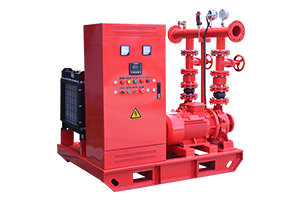What causes fire pump vibration?
Fire pump vibration can occur for various reasons, and it's essential to identify and address the underlying causes to ensure the pump operates efficiently and reliably during a fire emergency. Here are some common factors that can cause fire pump vibration:
-
Imbalanced Impellers: If the impellers inside the pump are not properly balanced, they can cause uneven forces when the pump is in operation, leading to vibration. This can occur due to manufacturing defects or damage over time.
-
Misalignment: Misalignment between the pump and the motor or other components can lead to excessive vibration. Proper alignment is crucial to ensure that the rotating parts of the pump operate smoothly.
-
Worn or Damaged Bearings: Bearings support rotating parts within the pump. Over time, bearings can wear out or become damaged, resulting in increased vibration. Regular lubrication and replacement of worn bearings are essential maintenance tasks.
-
Cavitation: Cavitation occurs when the pressure inside the pump drops below the vapor pressure of the fluid being pumped, causing the formation of vapor bubbles. When these bubbles collapse, they can create shockwaves and cause vibration. Cavitation can be caused by issues such as insufficient flow to the pump or a damaged impeller.
-
Resonance: Resonance is a situation where the natural frequency of the pump or its components matches the frequency of the forces acting on it. This can lead to amplified vibrations. Resonance issues may require adjusting the pump's mounting or structural support.
-
Foundation or Mounting Problems: If the pump is not securely mounted on a stable foundation, it can result in excessive vibration. Properly anchoring and supporting the pump can help alleviate this issue.
-
Pipe Misalignment or Blockages: Misaligned or blocked pipes can disrupt the flow of water through the system, leading to increased pressure and vibration within the pump.
-
External Factors: Vibrations from nearby equipment or machinery can affect the fire pump's performance. Ensure that the pump is isolated from sources of external vibration.
-
Wear and Tear: Over time, wear and tear on various components of the pump, including seals, couplings, and fasteners, can lead to increased vibration. Regular maintenance and replacement of worn parts are essential.
-
Electrical Issues: Electrical imbalances or problems with the motor or control panel can lead to uneven operation, resulting in vibration.
-
Excessive Load: Operating the pump beyond its rated capacity or in conditions for which it was not designed can cause excessive vibration. Ensure that the pump is appropriately sized for the system it serves.
To address fire pump vibration issues, it's crucial to conduct regular inspections and maintenance, including alignment checks, bearing inspections, and fluid analysis. If you notice excessive or unusual vibrations, it's advisable to shut down the pump and consult with a qualified fire pump technician to diagnose and resolve the problem. Ignoring vibration issues can lead to pump failure and compromise fire safety.







